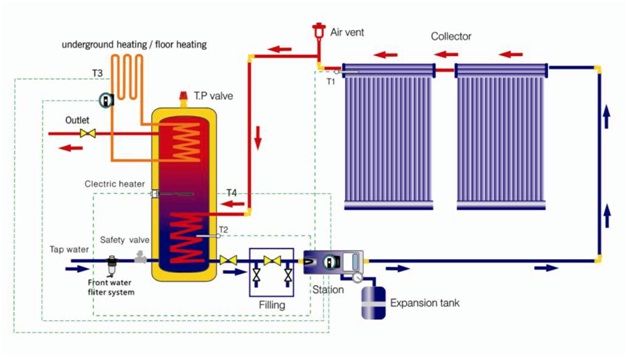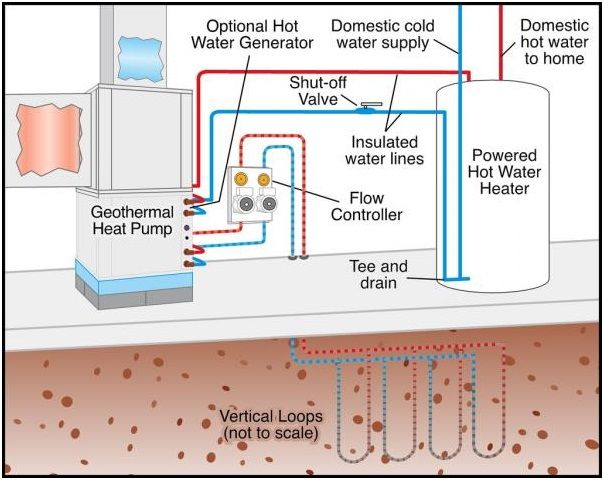Heating water by solar or by Geothermal
Domestic hot water represents 10-20% of our home’s energy bill. Removing this cost is often the easiest investment you can make on your start to a Zero Energy Home. Imagine cutting your energy bill by 20% forever! Producing hot water is by harnessing the sun can be done with solar water collectors or by geothermal equipped with a super heater. Both systems will produce hot water but the geothermal with a desuperheater generally only produces hot water in the summer months when the house calls for cooling. Let’s look at how both of these systems work.
Solar Thermal to heat hot water
Commercially available solar water heating packages have been around for well over a 100 years. The first systems were primitive in design but still very useful. They use the same principle found today which is to absorb the solar radiation and transfer it to the potable water. This radiation then heats the water for domestic use such as showers, laundry and dishes. The modern-day solar system with vacuum tubes is much more efficient and can reach temperatures in excess of 400 F. The modern-day solar water heater also has the advantage in that it can produce steaming water even in the coldest winter day.
In the image below you can see that a closed loop system is used rather than an open loop system. This is done because most systems require freeze protect and require a glycol heat transfer fluid to be used such that it can still operate in freezing climate. This antifreeze mixture is circulated through a solar storage tank that contains an internal heat exchanger. The heating fluid is heated in the collector’s manifold and transferred to the tank through the bottom heat exchanger. Our tanks also contain a top heat exchanger that can be used to move excessive heat energy to other areas of the home such as radiant floor heating.

Geothermal Desuperheater
A geothermal desuperheater is an option that is available in all our geothermal heating packages an upgrade. This system consists of a small circulating pump and a secondary heat exchanger. In the summer months when the temperatures require that heat is to be removed from the house, the desuperheater instead removes the heat which is transferred by the 2nd pump to the water storage tank to be dispersed as hot water for the house. Ordinarily the heat from the geothermal is transferred back to the earth in the closed loop system. The earth is colder than the home, so energy is transferred back into the ground.
With a Desuperheater, this waste heat removed by the heat pump is re-used to heat the domestic hot water. This can be done by using the existing tank or a special geothermal storage tank can also be used which contains two extra port to cycle the hot water through the geothermal system’s heat exchanger.
Which is better a solar thermal water heater or a geothermal desuperheater? Generally, the solar water heater will outperform the geothermal which is typically only used in the summer months. However. if you are making the investment into a geothermal system why not take advantage of free hot water in the summer! It typically only cost another $300 to add the desuperheater to the package. In then end any saving is a good savings especially when it is harvested by a renewable resource!



